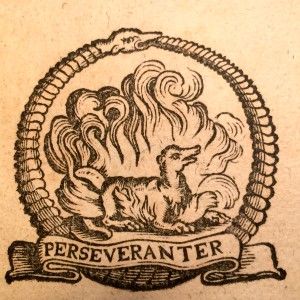Thank you, Queerscifi.com
The Review
It’s a wonderful book. Mike Karpa is one of those writers whose prose doesn’t get in the way. It’s literate and careful, but it doesn’t try too hard to be poetic, nor is it flat and unemotive. This quiet realism works especially well with the story, which is a kind of post-apocalyptic maker romance.
We know that the story, set in some unspecified future, is post-apocalyptic, because the author tells us, delivering the truth subtly, in discrete little fragments of history that (as I came to expect) become increasingly hair-raising, even as they continue to be almost throw-away lines in the narrative. That’s a very awkward way to describe it, because I don’t want to tell you anything about the state of the world in which the story takes place. Discovering Mardy’s world is one of the delights of reading “Red Dot.”
Mardy knows he’s in a post-apocalypse world—because he has survived it; been orphaned by it. But it is a world that is weirdly familiar, and comfortable, and certainly pleasant enough for Mardy and his group of twenty-something artist friends to live in. Mardy, his friends Inge, Cat, and Devesh, and the mysterious Hunt twins, are part of a crew of young makers—artists who rent workstations at a high-tech maker-space in San Francisco. They use their skills to compete in shows at a local gallery—run by more friends, a gay couple nicknamed Flaky and Death.
Developing their various artistic practices (which is not entirely like art today, because this is a very high-tech world, in which AI is ever-present) is rooted in a network of competitions—local, regional, continental—that can boost their prominence and marketability. They all have guaranteed basic incomes, and most of them have “day jobs.” Art is their passion, as art should be.
For all its futuristic fantasy, Mardy’s world feels very like the contemporary craft world I knew as a lifelong museum curator. I knew what the red dot of the title meant immediately, and it’s a great title, because it symbolizes what Mardy and his friends strive for.
At the core of the story is Mardy’s yearning to become a fully-realized adult, both through his art, and through his unexpected relationship with a friend’s brother. It is not really a coming-of-age story so much as a coming-to-appreciate-yourself story. It’s not unlike what all of us experienced when we were in our twenties. Before the apocalypse. It is an ordinary story made fresh and emotionally involving through the author’s skill at creating a world that is both frightening to imagine, and somehow optimistic.
The Reviewer
Ulysses Grant Dietz grew up in Syracuse, New York, where his Leave It to Beaver life was enlivened by his fascination with vampires, from Bela Lugosi to Barnabas Collins. He studied French at Yale, and was trained to be a museum curator at the University of Delaware. A curator since 1980, Ulysses has never stopped writing fiction for the sheer pleasure of it. He created the character of Desmond Beckwith in 1988 as his personal response to Anne Rice’s landmark novels. Alyson Books released his first novel, Desmond, in 1998. Vampire in Suburbia, the sequel to Desmond, is his second novel.
Ulysses lives in suburban New Jersey with his husband of over 41 years and their two almost-grown children.
By the way, the name Ulysses was not his parents’ idea of a joke: he is a great-great grandson of Ulysses S. Grant, and his mother was the President’s last living great-grandchild. Every year on April 27 he gives a speech at Grant’s Tomb in New York City.
